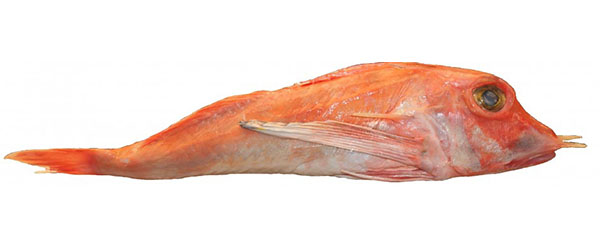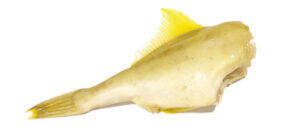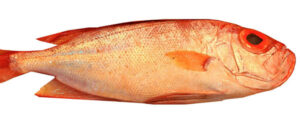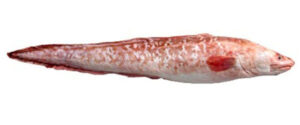Fishes
Cooking methods
Gurnard

Rating
Standard Names
Red Gurnard, Spiny Gurnard, Butterfly Gurnard, Latchet. Up to 30 species not differentiated at market.
There are many species of Gurnard, though the one most commonly marketed is Red Gurnard. Red Gurnard are found in most Australian waters but are most common in southern waters in depths of up to 100m, as far as the inner continental shelf.
| Government Stock Assessment | ||||
| Overfishing | Biomass | Conservation Groups | ||
| NSW | Undefined | |||
| New Zealand | “New stock assessments in 2014 and 2015 show that red gurnard are at or above their management targets in virtually all areas where they occur (although overfishing may be occurring in some South Island areas).” |
Forest and Bird lists longline-caught Gurnard (from top half of North Island) as “Ok to eat but some concerns” (Orange – Eat less of) and trawl-caught Gurnard as Worst Choice (Red – Don’t eat) | ||
| What do these terms mean? | ||||
The why and how of sustainability
Not much biological research has been done on Gurnard in Australia, making it hard to assess. In Commonwealth fisheries, Gurnard is caught as a 'minor byproduct' of the Great Australian Bight Trawl Sector (GABTS) Fishery and the Commonwealth Trawl and Scalefish Hook Fishery. Both of these fisheries primarily target high-value deepwater species such as Orange Roughy, Oreodories, Gemfish, Redfish, Blue Grenadier and Deepwater Sharks. There are no Total Allowable Catch Limits (TAC) for Gurnard in Australian Commonwealth waters. Catches are considered "Low" and "Reasonably Stable" in the NSW Ocean Trawl Fishery. Much more research has been done in New Zealand. They have been found to live for approximately 15 years, and they can grow as large as 2kg and 50cm. It is likely that Gurnard are fast growing and reach sexual maturity at 2-3 years old. Trawling catches many non-target species and bottom trawling as a method of fishing can cause considerable damage to seabed habitats and ecosystems.
Preparation and cooking
Gurnard have firm flesh that holds together well when cooking. They can be grilled or fried, however they have a very low oil content and the flesh can dry out. To combat this cook Gurnard fillets on a lower heat or using a wet method such a braising. Gurnard can be added to a soup or stew. The bones of Gurnard make good stock.





Sustainable Alternatives
Leatherjacket
The firm, tight, ‘springy’ meat of Leatherjacket can be used an alternative to that of Gurnard, whether grilling, frying or using in wet preparations.
Redfish
Like Gurnard, Redfish make excellent stock. The firm meat will hold up well in wet preparations and can be added to soups, curries or stews such as a traditional Bouillabaisse.
Pink Ling
Like Gurnard, the flesh of Ling is firm, white, and holds together well when cooked, having a ‘spring’ to it. Use fillets or diced pieces as an alternative in most preparations.



